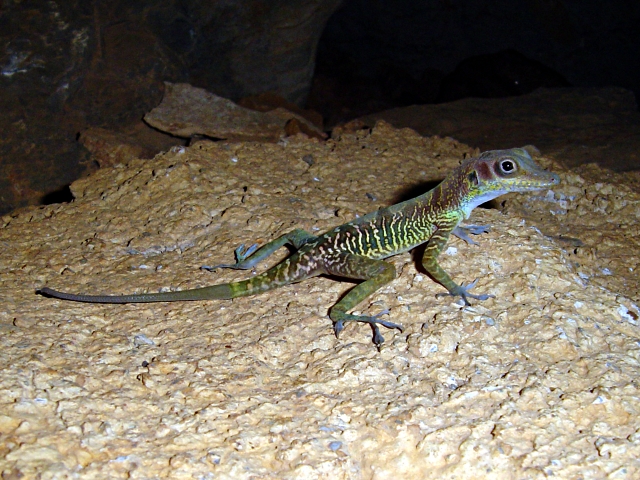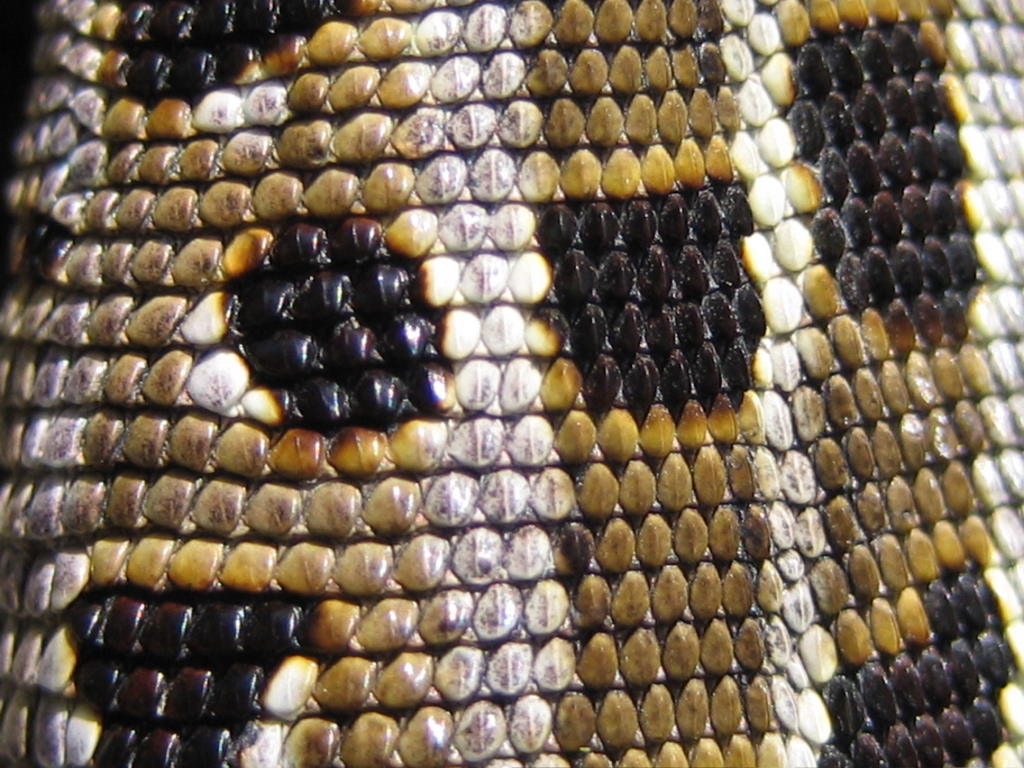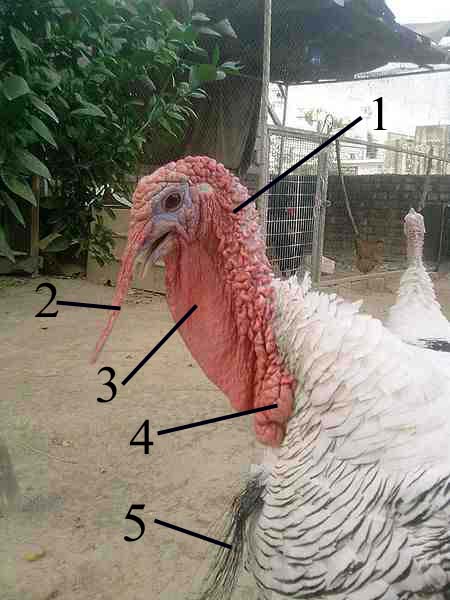|
Dewlap
A dewlap is a longitudinal flap of skin or similar flesh that hangs beneath the lower jaw or neck of many vertebrates. More loosely, it can be various similar structures in the neck area, such as those caused by a double chin or the submandibular vocal sac of a frog. More generally, it can be any hanging mass of skin, such as a fold of loose skin on an elderly person's neck, or the wattle of a bird. Dewlaps can be considered as a ''caruncle'', defined as "a small, fleshy excrescence that is a normal part of an animal's anatomy". Etymology The word is first attested in the mid 1300s as ''dewelappe'' ("fold of skin that hangs from the throat of oxen and kine"), from ''lappe'' ("loose piece", from Old English ), but the first element ''*dew(e)-'' is of nebulous origin and meaning; it probably was altered by folk etymology with " dew". Old English had ''fræt-læppa'' in the aforementioned sense (and Middle English ''fresh-lappe''). There also seems to be a cognate to Danish ... [...More Info...] [...Related Items...] OR: [Wikipedia] [Google] [Baidu] |
Anole
Dactyloidae are a family of lizards commonly known as anoles () and native to warmer parts of the Americas, ranging from southeastern United States to Paraguay. Instead of treating it as a family, some authorities prefer to treat it as a subfamily, Dactyloidae, of the family Iguanidae. In the past they were included in the family Polychrotidae together with '' Polychrus'' (bush anoles), but the latter genus is not closely related to the true anoles. Anoles are small to fairly large lizards, typically green or brownish, but their color varies depending on species and many can also change it. In most species at least the male has a dewlap, an often brightly colored flap of skin that extends from the throat/neck and is used in displays. Anoles share several characteristics with geckos, including details of the foot structure (for climbing) and the ability to voluntarily break off the tail (to escape predators), but they are only very distantly related, anoles being part of Iguania ... [...More Info...] [...Related Items...] OR: [Wikipedia] [Google] [Baidu] |
Lizard
Lizards are a widespread group of squamate reptiles, with over 7,000 species, ranging across all continents except Antarctica, as well as most oceanic island chains. The group is paraphyletic since it excludes the snakes and Amphisbaenia although some lizards are more closely related to these two excluded groups than they are to other lizards. Lizards range in size from chameleons and geckos a few centimeters long to the 3-meter-long Komodo dragon. Most lizards are quadrupedal, running with a strong side-to-side motion. Some lineages (known as " legless lizards"), have secondarily lost their legs, and have long snake-like bodies. Some such as the forest-dwelling '' Draco'' lizards are able to glide. They are often territorial, the males fighting off other males and signalling, often with bright colours, to attract mates and to intimidate rivals. Lizards are mainly carnivorous, often being sit-and-wait predators; many smaller species eat insects, while the Komodo eats mamma ... [...More Info...] [...Related Items...] OR: [Wikipedia] [Google] [Baidu] |
Iguana Dewlap Labeled
''Iguana'' (, ) is a genus of herbivorous lizards that are native to tropical areas of Mexico, Central America, South America, and the Caribbean. The genus was first described in 1768 by Austrian naturalist Josephus Nicolaus Laurenti in his book ''Specimen Medicum, Exhibens Synopsin Reptilium Emendatam cum Experimentis circa Venena''. Two species are placed in the genus, the green iguana, which is widespread throughout its range and a popular pet, and the Lesser Antillean iguana, which is native to the Lesser Antilles. Genetic analysis indicates that the green iguana may comprise a complex of multiple species, some of which have been recently described, but the Reptile Database considers all of these as subspecies of the green iguana. The word "iguana" is derived from the original Taino name for the species, ''iwana''. In addition to the two species in the genus ''Iguana'', several other related genera in the same family have common names of the species including the word "i ... [...More Info...] [...Related Items...] OR: [Wikipedia] [Google] [Baidu] |
Wattle (anatomy)
A wattle is a fleshy caruncle hanging from various parts of the head or neck in several groups of birds and mammals. Caruncles in birds include those found on the face, wattles, dewlaps, snoods, and earlobes. Wattles are generally paired structures, but may occur as a single structure when it is sometimes known as a dewlap. Wattles are frequently organs of sexual dimorphism. In some birds, caruncles are erectile tissue and may or may not have a feather covering. Wattles are often such a striking morphological characteristic of animals that it features in their common name. For example, the southern and northern cassowaries are known as the double-wattled and single-wattled cassowary, respectively, and a breed of domestic pig is known as the Red Wattle. Birds Function In birds, wattles are often an ornament for courting potential mates. Large wattles are correlated with high testosterone levels, good nutrition, and the ability to evade predators, which in turn indicates a ... [...More Info...] [...Related Items...] OR: [Wikipedia] [Google] [Baidu] |
Zebu
The zebu (; ''Bos indicus'' or ''Bos taurus indicus''), sometimes known in the plural as indicine cattle or humped cattle, is a species or subspecies of domestic cattle originating in the Indian sub-continent. Zebu are characterised by a fatty hump on their shoulders, a large dewlap, and sometimes drooping ears. They are well adapted to withstanding high temperatures, and are farmed throughout the tropical countries, both as pure zebu and as hybrids with taurine cattle, the other main type of domestic cattle. Zebu are used as draught and riding animals, dairy cattle, and beef cattle, as well as for byproducts such as hides and dung for fuel and manure. Some small breeds such as the miniature zebu are also kept as pets. In 1999, researchers at Texas A&M University successfully cloned a zebu. In some regions, such as parts of India, cattle, especially zebu, have significant religious meaning. Taxonomy and name The scientific name ''Bos indicus'' was introduced by Carl Li ... [...More Info...] [...Related Items...] OR: [Wikipedia] [Google] [Baidu] |
Caruncle (bird Anatomy)
A caruncle is defined as 'a small, fleshy excrescence that is a normal part of an animal's anatomy'. Within this definition, caruncles in birds include wattles (or dewlaps), combs, snoods, and earlobes. The term ''caruncle'' is derived from Latin ''caruncula'', the diminutive of ''carō'', "flesh". Taxonomy Caruncles are carnosities, often of bright colors such as red, blue, yellow or white. They can be present on the head, neck, throat, cheeks or around the eyes of some birds. They may be present as combs or crests and other structures near the beak, or, hanging from the throat or neck. Caruncles may be featherless, or, have small scattered feathers. In some species, they may form pendulous structures of erectile tissue, such as the snood of the domestic turkey. Caruncles are sometimes secondary sexual characteristics, having a more intense color or even a different color, developing as the male reaches sexual maturity. Function Caruncles are also ornamental elements used ... [...More Info...] [...Related Items...] OR: [Wikipedia] [Google] [Baidu] |
Moose
The moose (in North America) or elk (in Eurasia) (''Alces alces'') is a member of the New World deer subfamily and is the only species in the genus ''Alces''. It is the largest and heaviest extant species in the deer family. Most adult male moose have distinctive broad, palmate ("open-hand shaped") antlers; most other members of the deer family have antlers with a dendritic ("twig-like") configuration. Moose typically inhabit boreal forests and temperate broadleaf and mixed forests of the Northern Hemisphere in temperate to subarctic climates. Hunting and other human activities have caused a reduction in the size of the moose's range over time. It has been reintroduced to some of its former habitats. Currently, most moose occur in Canada, Alaska, New England (with Maine having the most of the lower 48 states), New York State, Fennoscandia, the Baltic states, Poland, Kazakhstan, and Russia. Its diet consists of both terrestrial and aquatic vegetation. Predators of moos ... [...More Info...] [...Related Items...] OR: [Wikipedia] [Google] [Baidu] |
Bos Taurus Indicus
The zebu (; ''Bos indicus'' or ''Bos taurus indicus''), sometimes known in the plural as indicine cattle or humped cattle, is a species or subspecies of domestic cattle originating in the Indian sub-continent. Zebu are characterised by a fatty hump on their shoulders, a large dewlap, and sometimes drooping ears. They are well adapted to withstanding high temperatures, and are farmed throughout the tropical countries, both as pure zebu and as hybrids with taurine cattle, the other main type of domestic cattle. Zebu are used as draught and riding animals, dairy cattle, and beef cattle, as well as for byproducts such as hides and dung for fuel and manure. Some small breeds such as the miniature zebu are also kept as pets. In 1999, researchers at Texas A&M University successfully cloned a zebu. In some regions, such as parts of India, cattle, especially zebu, have significant religious meaning. Taxonomy and name The scientific name ''Bos indicus'' was introduced by Carl Linnaeus ... [...More Info...] [...Related Items...] OR: [Wikipedia] [Google] [Baidu] |
Turkey (bird)
The turkey is a large bird in the genus ''Meleagris'', native to North America. There are two extant turkey species: the wild turkey (''Meleagris gallopavo'') of eastern and central North America and the ocellated turkey (''Meleagris ocellata'') of the Yucatán Peninsula in Mexico. Males of both turkey species have a distinctive fleshy wattle, called a snood, that hangs from the top of the beak. They are among the largest birds in their ranges. As with many large ground-feeding birds (order Galliformes), the male is bigger and much more colorful than the female. Native to North America, the wild species was bred as domesticated turkey by indigenous peoples. It was this domesticated turkey that later reached Eurasia, during the Columbian exchange. In English, "turkey" probably got its name from the domesticated variety being imported to Britain in ships coming from the Turkish Levant via Spain. The British at the time therefore associated the bird with the country Turke ... [...More Info...] [...Related Items...] OR: [Wikipedia] [Google] [Baidu] |
Danish Dialects
The Danish language has a number of regional and local dialect varieties. These can be divided into the traditional dialects, which differ from modern Standard Danish in both phonology and grammar, and the Danish accents, which are local varieties of the standard language distinguished mostly by pronunciation and local vocabulary colored by traditional dialects. Traditional dialects are now mostly extinct in Denmark, with only the oldest generations still speaking them. The traditional dialects are generally divided into three main dialectal areas: Jutlandic dialect, Insular Danish, and Bornholmish. Bornholmish is the only Eastern Danish dialect spoken in Denmark, since the other Eastern Danish dialects (, , and ) were spoken in areas ceded to Sweden and subsequently assimilated to Standard Swedish. Jutlandic is further divided into Southern Jutlandic and Northern Jutlandic, with Northern Jutlandic subdivided into North Jutlandic and West Jutlandic. Insular Danish is divided in ... [...More Info...] [...Related Items...] OR: [Wikipedia] [Google] [Baidu] |
Hyoid Apparatus
The hyoid apparatus is the collective term used in veterinary anatomy for the bones which suspend the tongue and larynx. It consists of pairs of stylohyoid, thyrohyoid, epihyoid and ceratohyoid bones, and a single basihyoid bone. The hyoid apparatus resembles the shape of a trapeze, or a bent letter "H". The basihyoid bone lies within the muscle at the base of the tongue. In humans, the single hyoid bone The hyoid bone (lingual bone or tongue-bone) () is a horseshoe-shaped bone situated in the anterior midline of the neck between the chin and the thyroid cartilage. At rest, it lies between the base of the mandible and the third cervical verteb ... is an equivalent of the hyoid apparatus. References Bird anatomy Mammal anatomy Human head and neck {{animal-anatomy-stub ... [...More Info...] [...Related Items...] OR: [Wikipedia] [Google] [Baidu] |








.jpg)


_(14771939372).jpg)